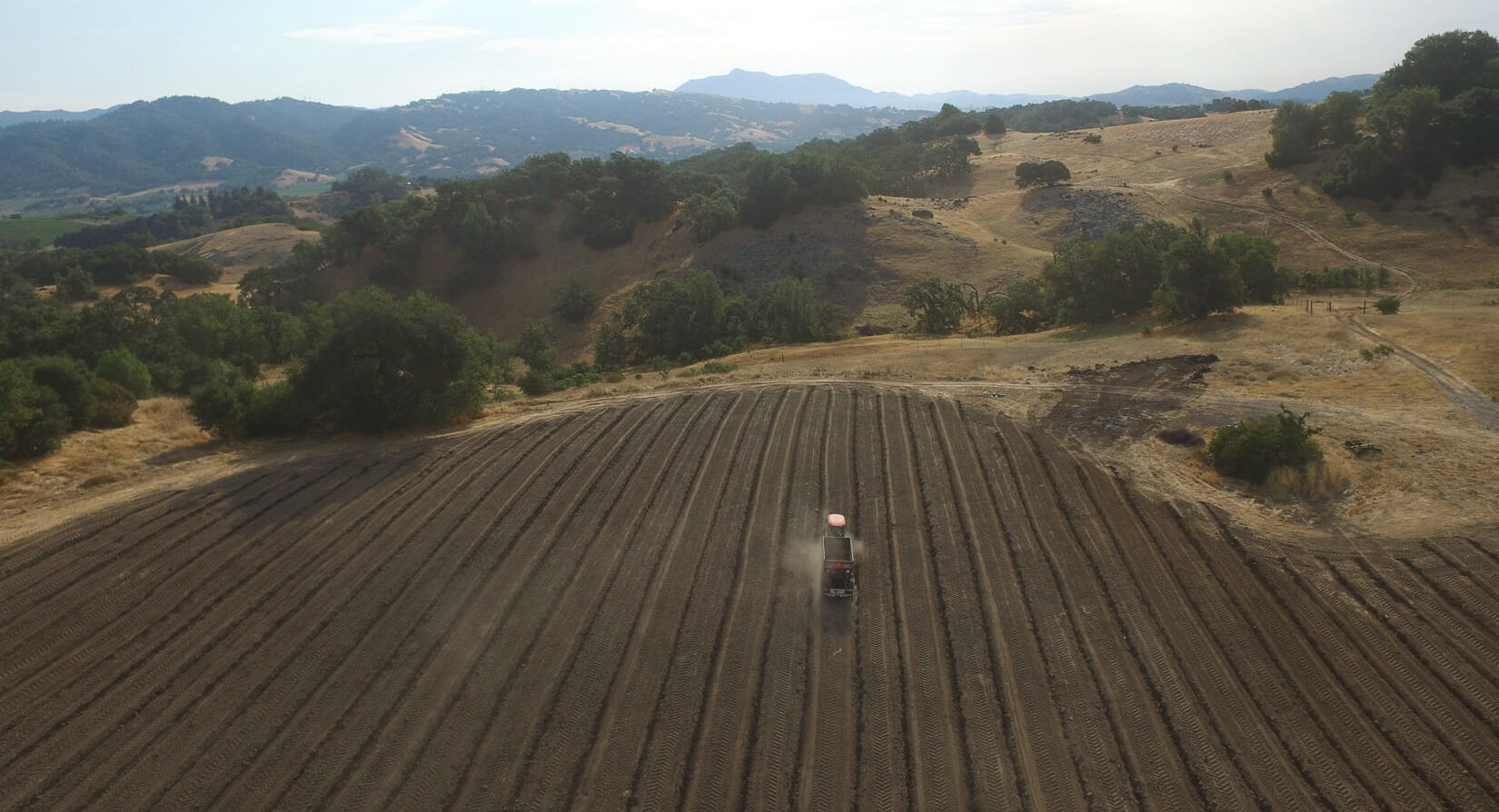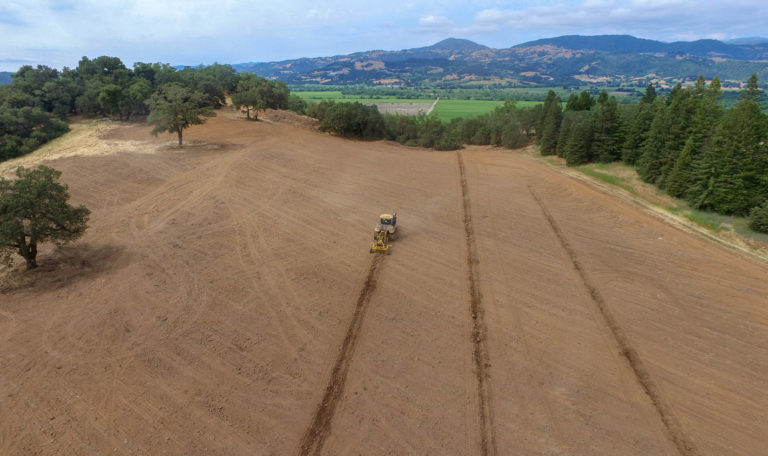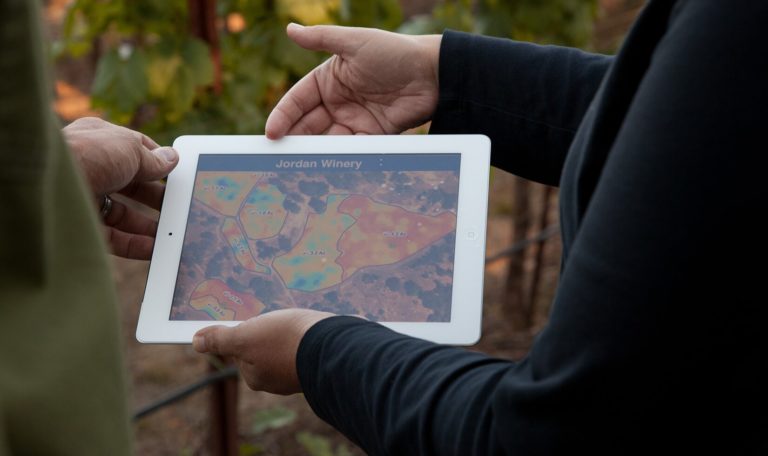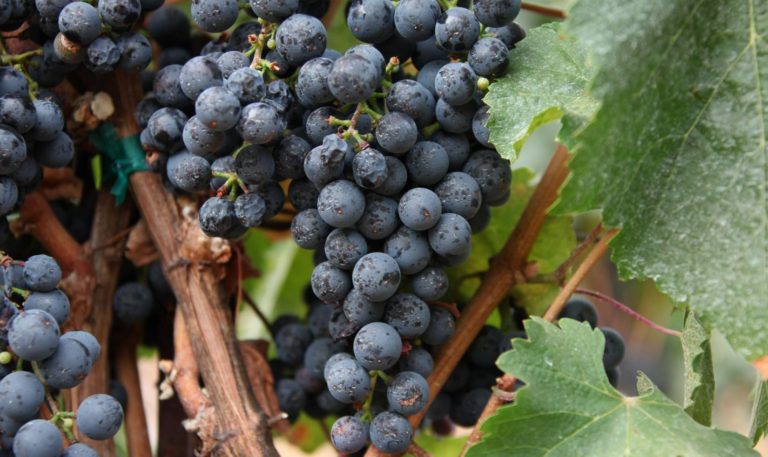Guests who visit Jordan Winery expect to see a grand French chateau, towering wine barrels and decanters being filled with cabernet sauvignon. But, for the next seven years, we’ll also be giving them a different kind of show–a behind-the-scenes look at one of the most dramatic and essential duties that takes place in the wine business: planting a vineyard. Nearly two dozen vineyard blocks totaling about 120 acres of grapevines are being removed and their soil replenished before new vines can be replanted. This article shares the background story of why Jordan is replanting all of its vines now. (View our latest blog post on the replant, Why We Rip Vineyards Soil.)
Grapegrowing in the past
When Tom and Sally Jordan purchased the piece of Sonoma wine country land that would become their winery and home in the early 1970s, very little was known about growing cabernet sauvignon grapevines in Alexander Valley. They yearned to establish a Bordeaux-style wine estate, yet had no local blueprint when planting their vines in a nearby valley. Neither did their neighbors. White grapes like gewurztraminer and muscat could be found growing in the warm, inland benchlands. Back then, so much was trial and error. The Jordans, like the Youngs, Munselles, Millers and other local pioneers, believed in cabernet sauvignon’s future in the region, and planted 225 acres of Bordeaux’s flagship red and its favorite blending brethren, merlot.
The inaugural 1976 Jordan Cabernet Sauvignon was released in 1980, made from a combination of estate and grower grapes. Cabernet sauvignon grapes were picked at lower sugar levels when they still had vegetal flavors like green beans and green peppers. We considered these the characteristics of classic California cabernet.
Grape phylloxera strikes
Over the next two decades, lessons about grapevine farming, soils and climate were learned. Just as Jordan Winemaker Rob Davis and his vineyard manager were hitting their stride in the mid-1990s, Jordan’s cabernet sauvignon and merlot vineyards on the Alexander Valley floor began to struggle to ripen their fruit. Phylloxera, a root-damaging louse had attacked the vines, and replanting was the only recourse. It was a devastating diagnosis for an estate winery that relied entirely on its own vineyards for grapes. Because 20-25 years is about the average lifespan of a grapevine, the painful event was seen as a natural part of wine agriculture—and an opportunity to both plant and plan smarter.
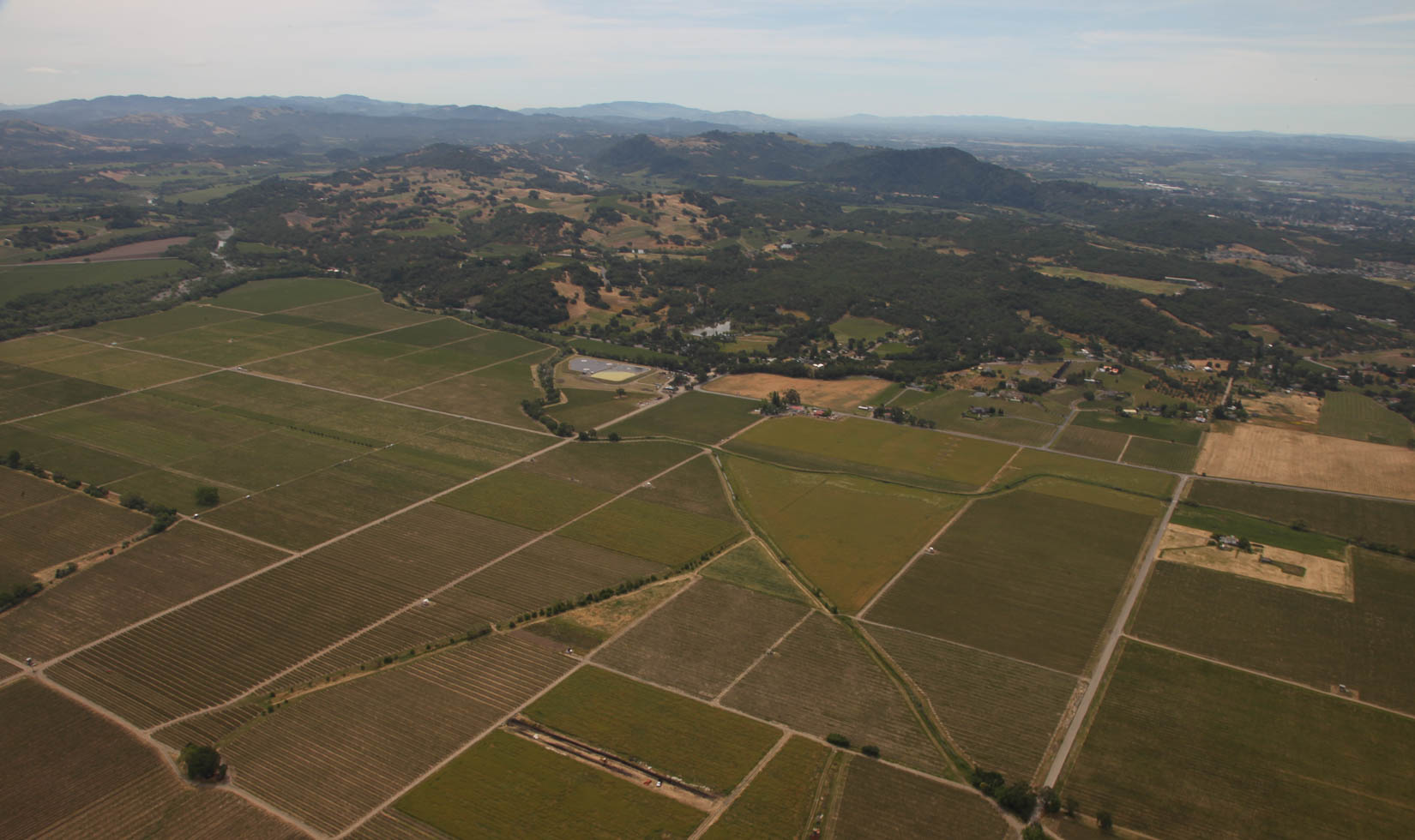
Davis immediately began sourcing grapes from nearby farmers on the other side of Alexander Valley’s riverbank, so Jordan would have enough fruit to make wine. From 1996 to 1999, grapevines were planted on the hillsides behind the Jordan Winery Chateau for the first time, taking advantage of new rootstocks, clonal selections and trellis systems. In addition to cabernet sauvignon and merlot, the two grapes found in Jordan’s singular red wine, petit verdot and cabernet franc were added to experiment with the Bordeaux-inspired blend. In their youngest years, these precocious vines helped produce classic wines, such as the 1999 Jordan Cabernet Sauvignon, and held great promise for the future of grape-growing at Jordan Estate.
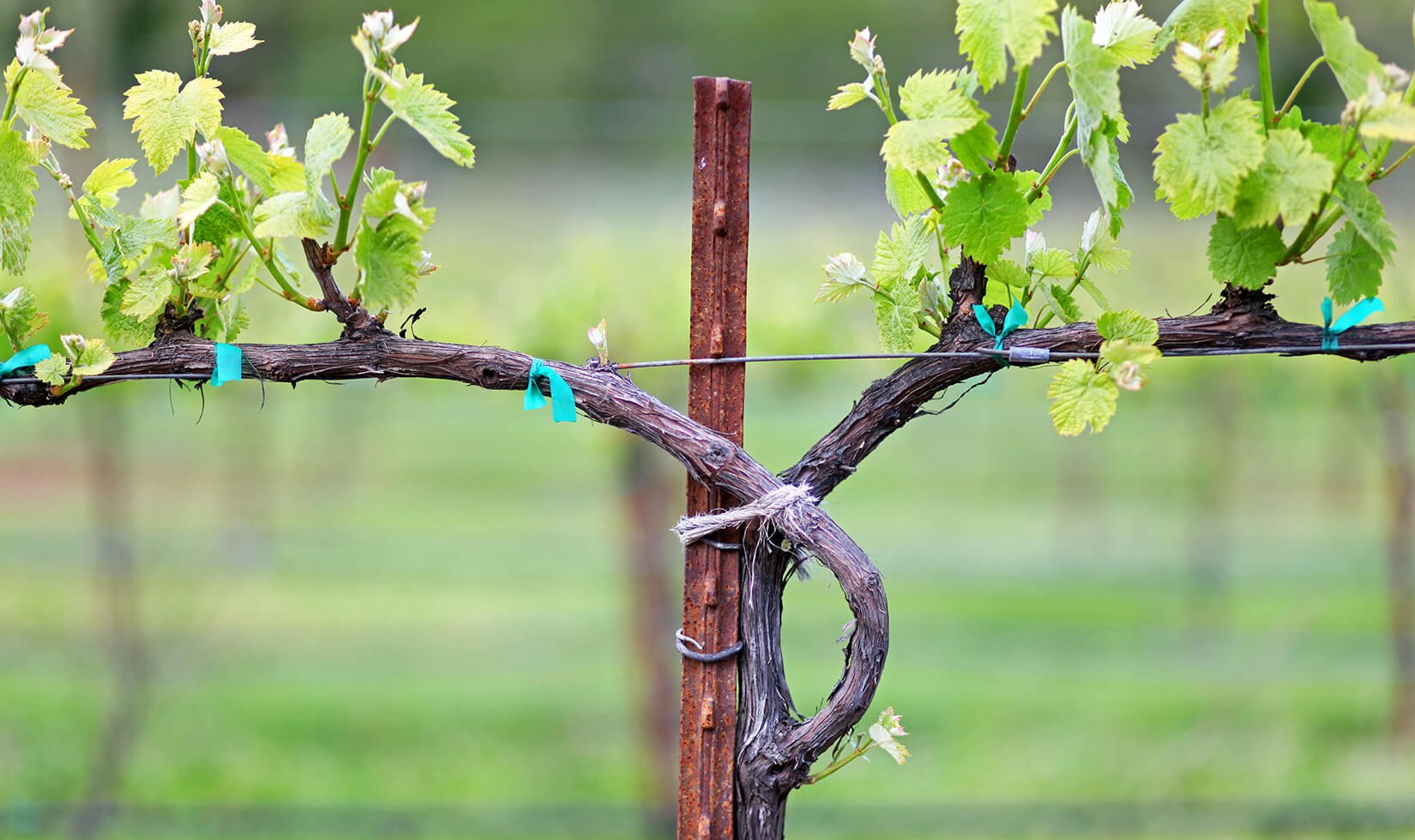
New leaders, new energy
Enter Brent Young, who joined Jordan as a harvest intern in 2005—the year John Jordan took the reins and began to revitalize the business literally from the ground up. Armed with a viticulture degree and a drive to always improve, Young soon moved into a full-time role as viticulturist at Jordan and began to tackle a complex problem below the surface of the estate vineyards: These young grapevines were already dropping in performance after just 5-10 years of life.
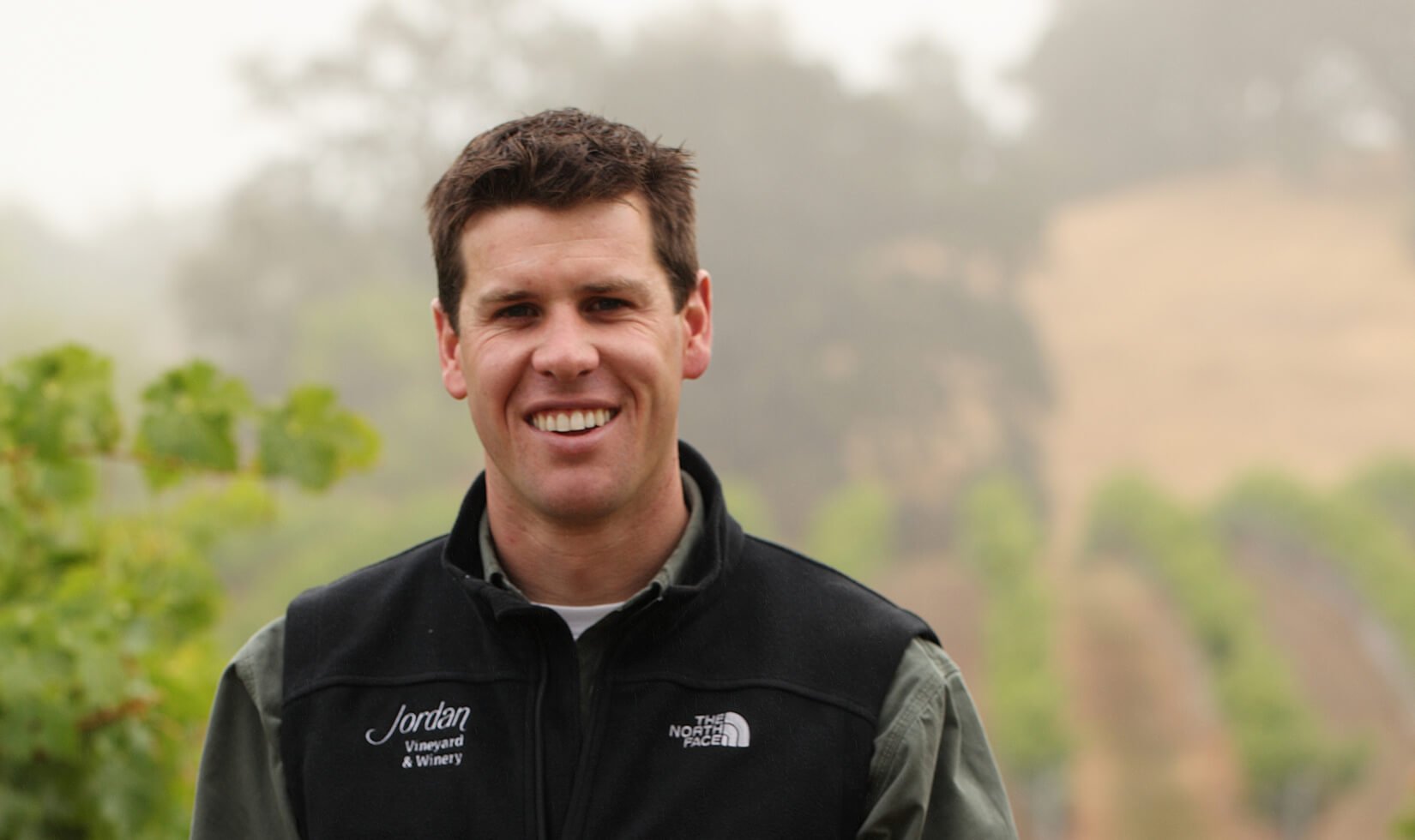
John Jordan agreed to do whatever it took to find the cause and revive the plants. Soil-mapping and GPS (Global Positioning System) technology, tools that didn’t exist when Jordan planted its valley or hillside vineyards, were utilized to better understand the soil chemistry and water-holding capacity. An exhaustive, three-year study revealed a patchwork of different soils across the estate, though each vineyard block had been farmed uniformly. Many vineyard blocks were also planted on a hard clay soil called serpentine, which can make it challenging for grapevines to spread their deep roots.
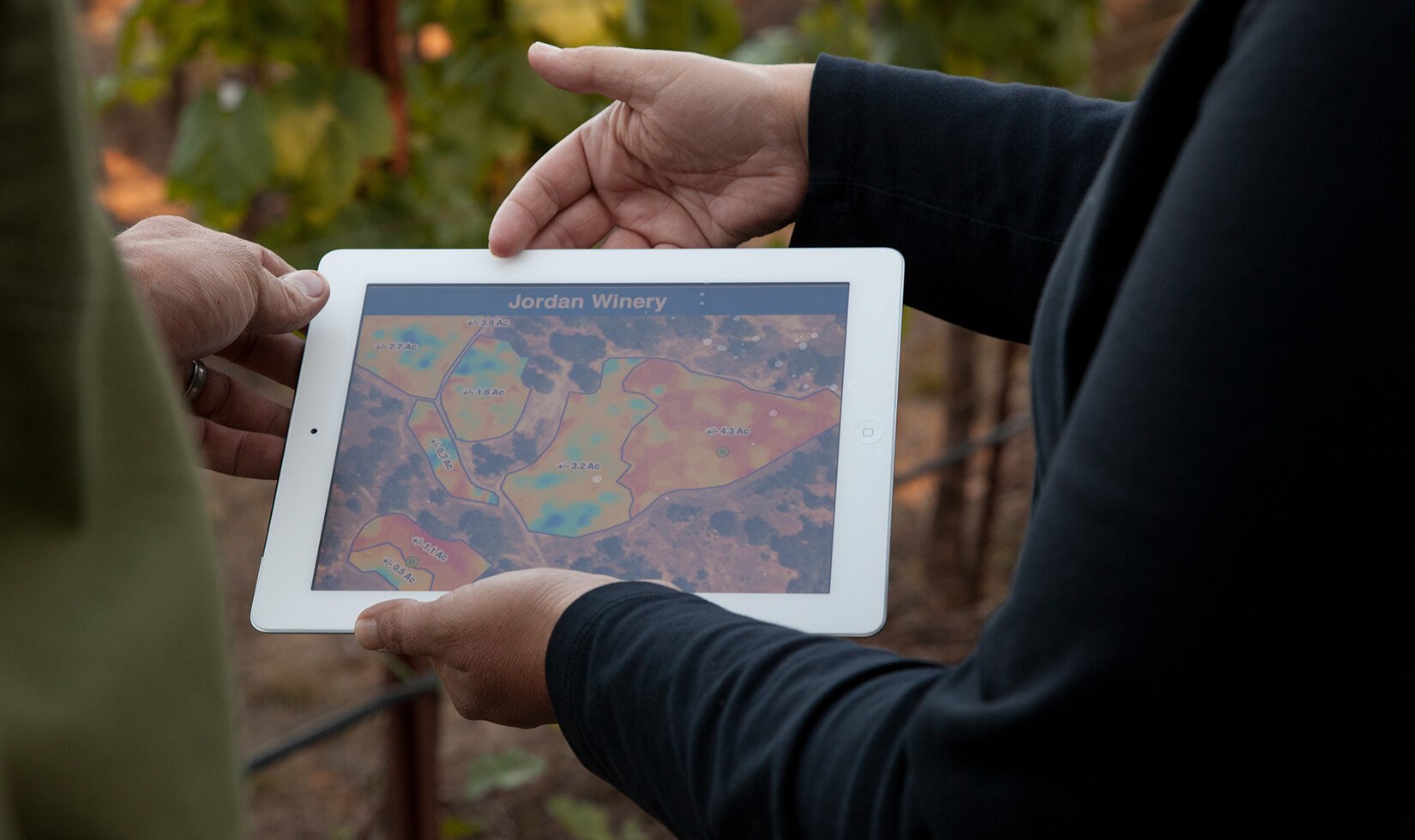
Young began to implement new farming strategies across the estate, tailored to each soil type, from irrigation and leafing changes to grafting underperforming cabernet vines to other blending varietals, such as malbec and petit verdot. In the meantime, John Jordan green-lighted Davis’s desire to increase the amount of grapes purchased from nearby, top-notch growers, to improve wine quality and consistency. “The importance of soil, soil and soil was drummed into me by my mentor, Andre Tchelistcheff,” Davis says. “Without great soil, we can’t produce great wines. The soils at the Jordan Estate are high in magnesium and low in drainability, and we’ve experienced reduced vine growth and crop development as a result.”
In 2012, the team collectively decided to sell Jordan’s original valley floor vineyard to focus totally on working with grower vineyards and on farming the hillside grapevines at Jordan Estate.
“The goal is to make every vintage better than the last,” Jordan says. “We had to say goodbye to a vineyard that could no longer supply us with the quality of grapes we demand.”
Under Young’s direction, Jordan Estate petit verdot grapevines were healthier and more balanced in flavor than ever before. Experiments in certain cabernet blocks were yielding positive results.
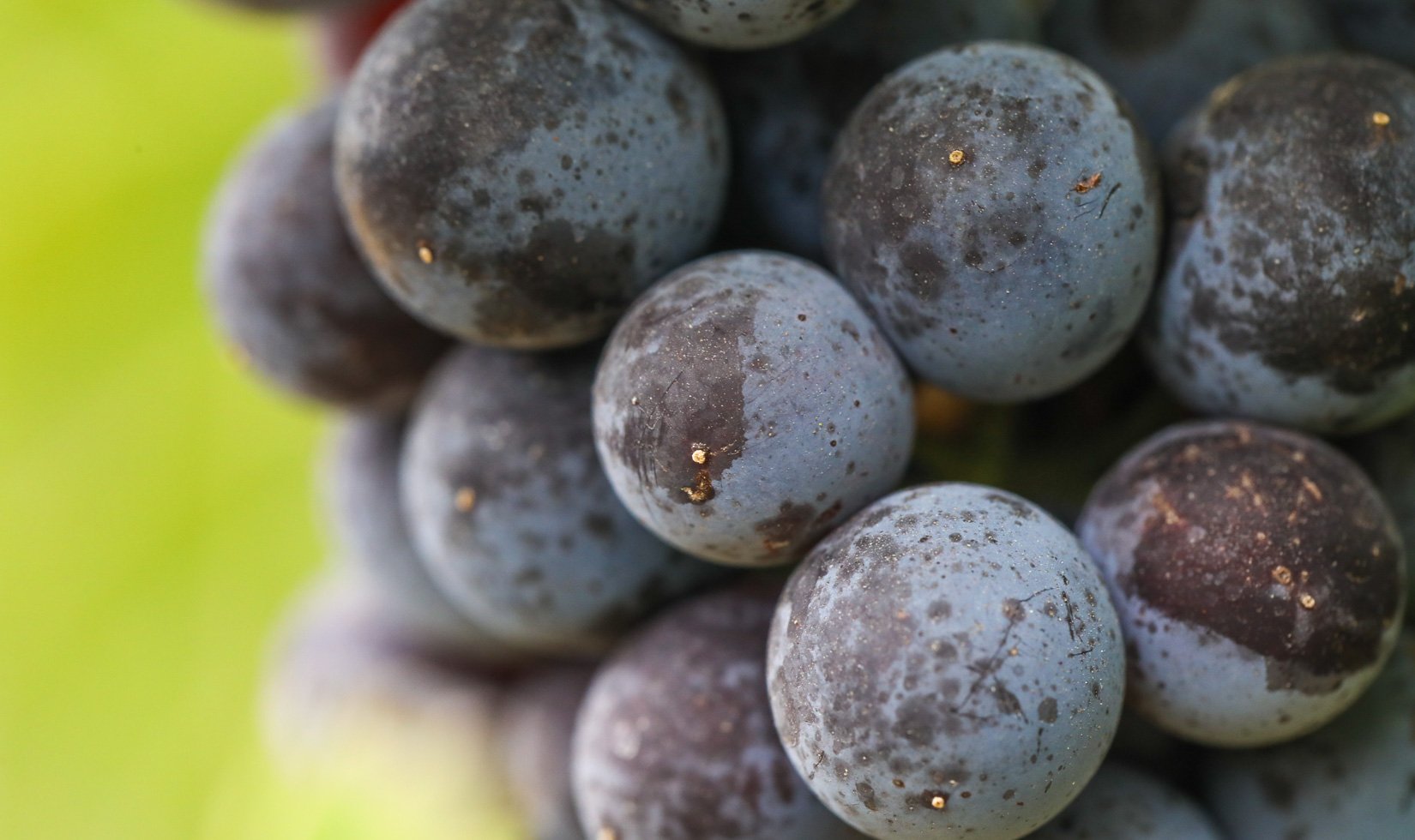
A new nemesis
As Jordan Estate vineyards approached their twentieth birthday, during the cool-climate years of 2010 and 2011, they began to struggle to ripen their grapes. Some leaves began to turn red, and it seemed as if another virus was attacking the plants as they approached the twenty-year mark. Vineyards across Sonoma and Napa counties were facing the same sickness, first spotted in Napa Valley in 2008.
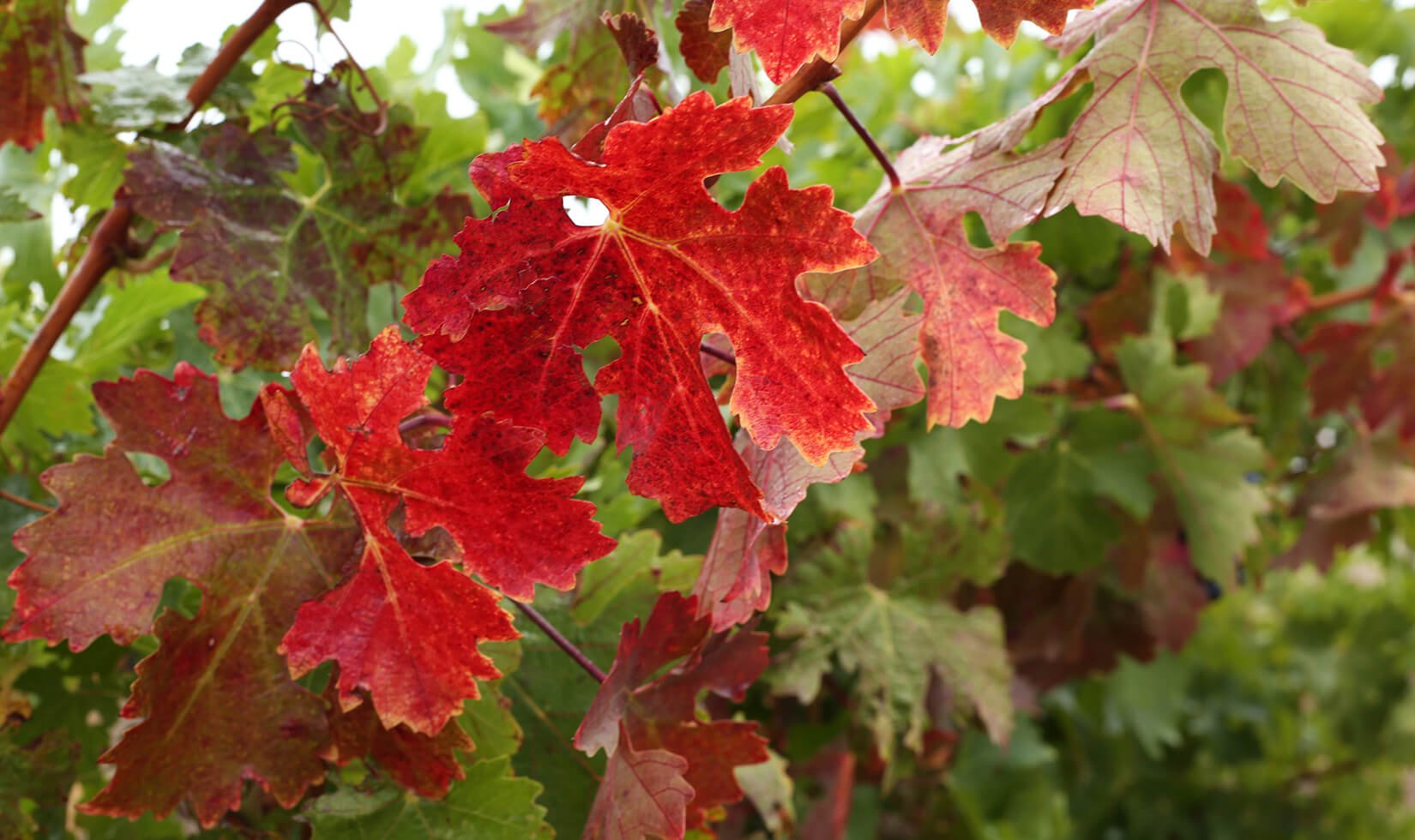
The grapevine disease became known as Red Blotch, but the cause was not diagnosed until 2016. Like the phylloxera bug that devastated Jordan’s original valley floor vineyard in 1996, an insect named the alfalfa treehopper had attacked the Jordan Estate hillside vineyards, spreading a virus that turned the leaves red each fall. The treatment? Replant every grapevine.
Successful agriculture is a balance of ecology—a marriage between plants, insects, soils and weather. With Jordan grapevines, it seems that the marriage can only last twenty years before it’s time for a fresh start. Young is determined to break the cycle this time. In 2016, a massive seven-year plan to replant Jordan Estate’s 118 acres of grapevines began.
Vineyard replanting for the future
Young’s mission is to return cabernet sauvignon grapes grown on the Jordan property to the final blend, through vineyard replanting, reorienting rows, micro-farming and amending the soils with nutrients they don’t naturally possess. The first block, J4, located below John Jordan’s home, is an experimental playground for testing rootstocks, vineyard row spacing and direction, as well as new technologies for applying nutrient applications—all unavailable to Tom Jordan when he planted the estate in 1996.
“The goal of the replanting is to grow the flavors Rob wants in Jordan Cabernet Sauvignon,” Young explains. “I’m determined to get these cabernet grapes back into the Jordan blend.”
When the first vines were removed, Young was surprised at what he found below the surface. “The old vines were j-rooted—meaning the roots took a j-shape, reaching back toward the surface rather than reaching deep into the soil. Vines won’t weather the heat of summer and the rain of winter to grow quality grapes if their roots don’t stretch deep below the soil.”
Basically, the grapevines were planted in too shallow holes, which forced the roots to bind up, instead of reaching down for water and nutrients. Between the planting mistakes made twenty years ago and the spread of Red Blotch disease in Napa and Sonoma, the vineyards had a house of cards stacked against them.
Vineyard blocks are being removed gradually over the course of three years, albeit strategically due to lessons learned from the 1996 replant. It takes 3-5 years for a newly planted vineyard to bear fruit, and the soils also need time to rest fallow to replenish their nutrients before new vines are planted. Great care is taken to remove all of the blocks in sections of the estate at the same time to avoid the possibility of alfalfa treehoppers spreading disease to the new plantings. Petit verdot and malbec, the top-performing vineyards, will be replanted last, as they are valuable components to the Jordan master blend. But rest assured: The replant doesn’t mean there will be less bottles of Jordan Cabernet Sauvignon made. Because we have been sourcing quality fruit from several grape growers for a large portion of the Jordan master blend since 2005, the loss of estate grapes isn’t going to impact our annual production numbers.
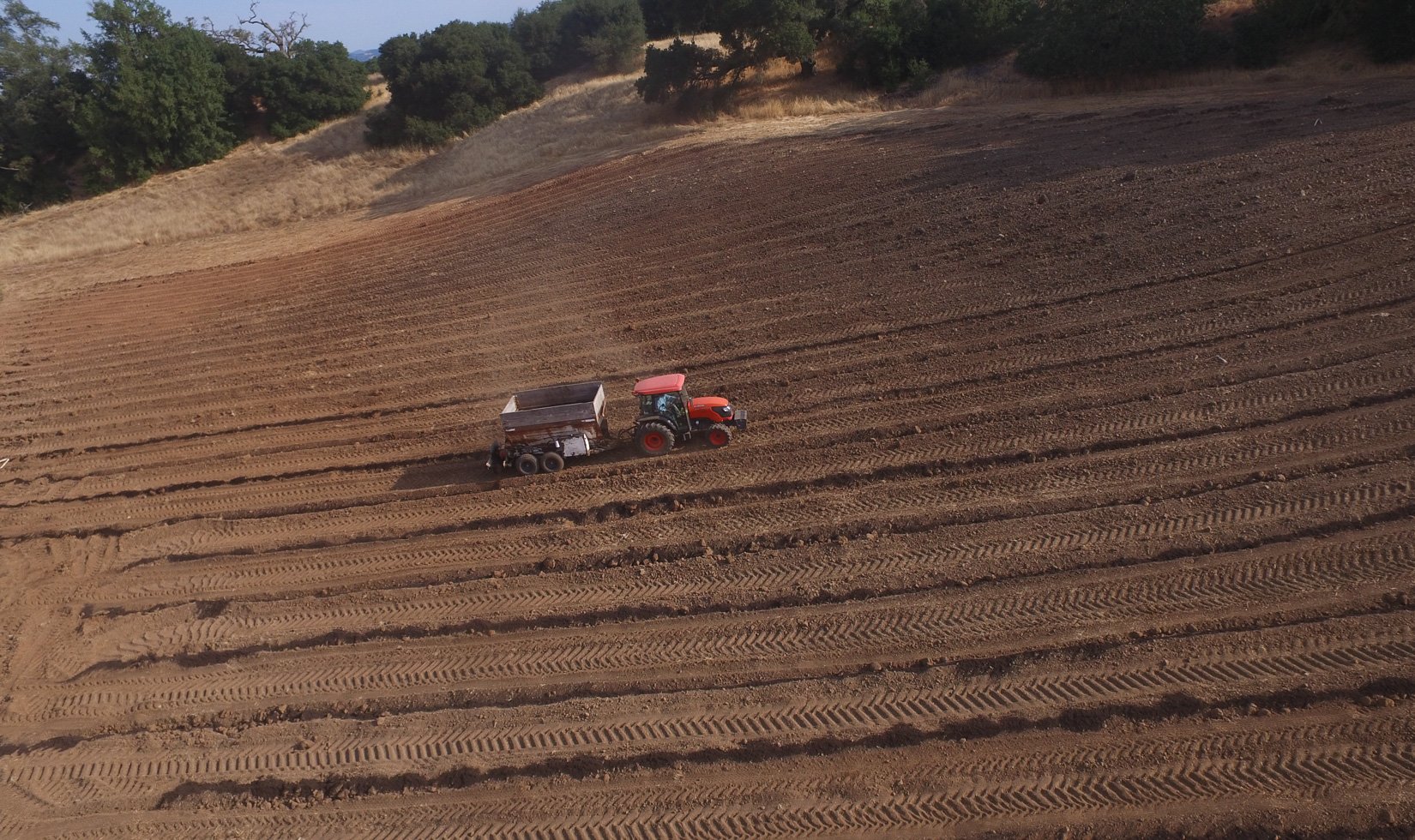
Guests who visit Jordan Winery to experience the seasonal Estate Tour & Tasting and Vineyard Hikes all have the opportunity to see this farming project at various stages while traveling through the 1,200-acre property.
“We’re also changing the orientation of the rows when possible,” Young says. “When the new vines are planted to specific rootstocks and clonal selections, they will receive uniform sun all day, rather than morning sun on one side and afternoon sun on the other. This will eliminate underexposure to sun in the morning and overexposure in the afternoon.”
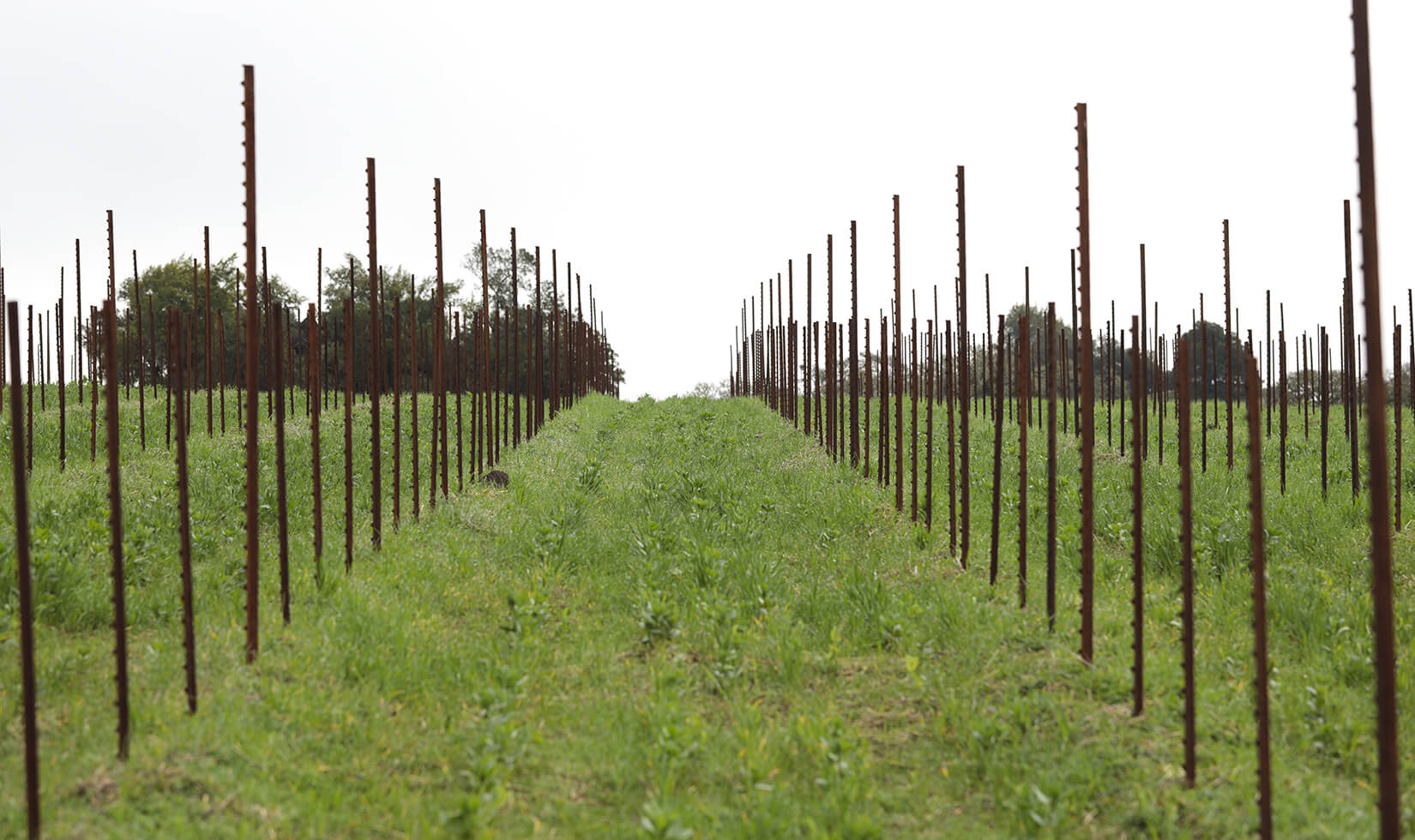
Preparing the ground for replanting J4, the vineyard below John’s home, was arduous.
“We didn’t want any rocks, including magnesium-loaded serpentine, to impede the growth of the vine roots, so we pulled out the old vines and broke up the hardpan,” Young says. “We added soil amendments, such as gypsum, potassium and compost, where the new vines will grow.”
Soils need time to renew after supporting grapevines for decades, so each piece of land will be left fallow for 1-2 years, growing only cover crops. Cover crops are planted to enhance the health of the soil, such as nitrogen-rich legumes, clover and straw. Irrigation and fertigation will be vine-specific, and the goal is to attend to each vine’s needs.
A new vineyard site discovered
The first new vines will be planted at J4 in June 2018, and the last block of the replant is expected in 2021. The other exciting discovery from the replanting and soil studies was a six-acre parcel of land directly across from the Jordan Winery Chateau that had never been planted to grapes but has quality, rocky, volcanic soils similar to the Jordan Estate petit verdot grapevines. This new block, dubbed the Chateau Block, will be planted to cabernet sauvignon. Tractor work began in spring of 2018, and winery visitors will get to see this vineyard being planted over the next several months. We hope to incorporate the Chateau Block into winery tours in the future.
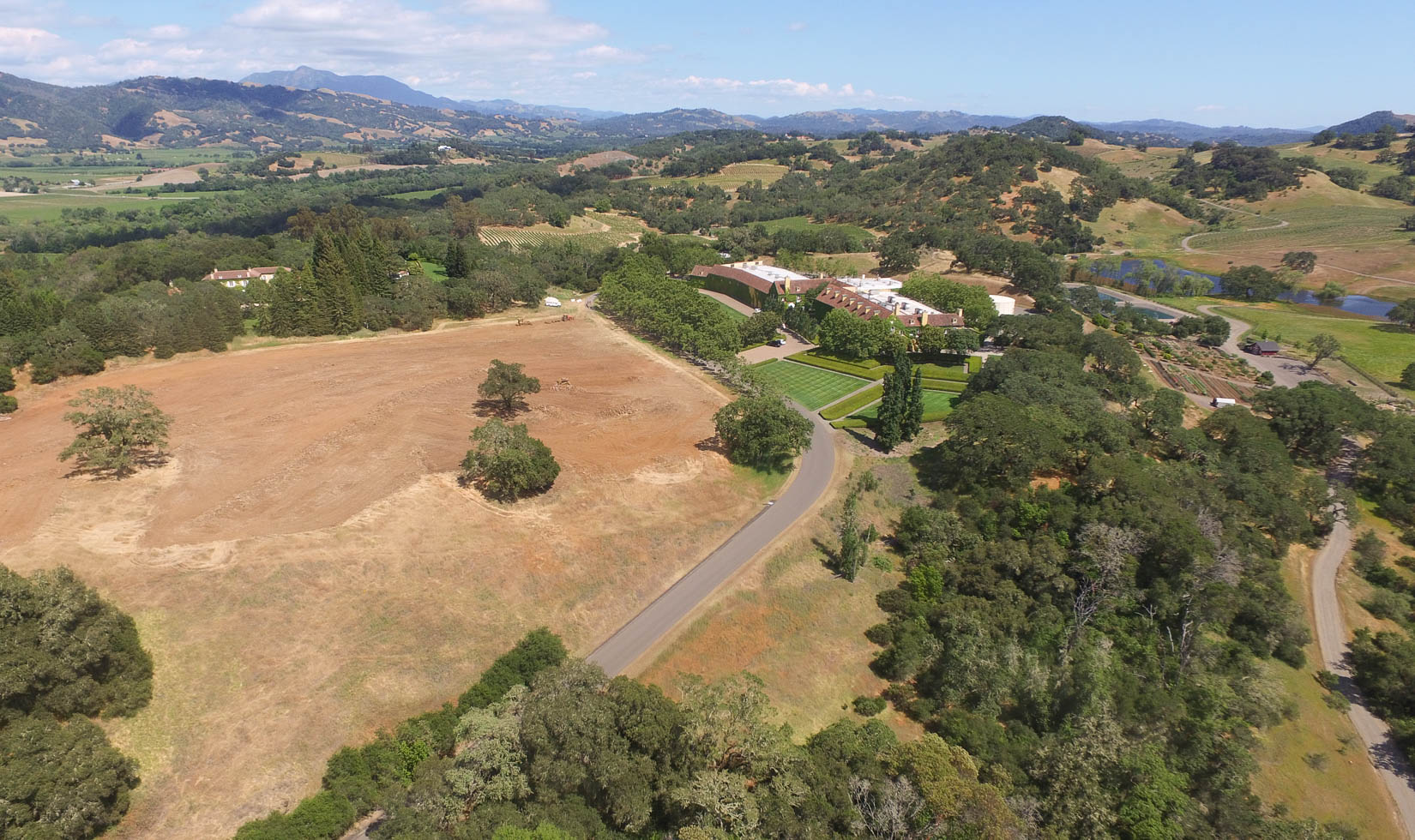
For the foreseeable future, Jordan will continue to source cabernet sauvignon grapes from favored Alexander Valley growers. One of them is Mike Mazzoni of Geyserville. Mazzoni is intrigued by Jordan’s replanting efforts, but is taking a wait-and-see stance on the results. “I’m old-school,” he says.
“As long as we’ve been doing this, we continue to learn about grapegrowing, soil structure and vineyard husbandry,” Davis explains. “We can’t change soil, as Andre often told me, but we can work with it and do our best to enhance it. We’re opening new pages for learning, seeking specific fruit character by site.”
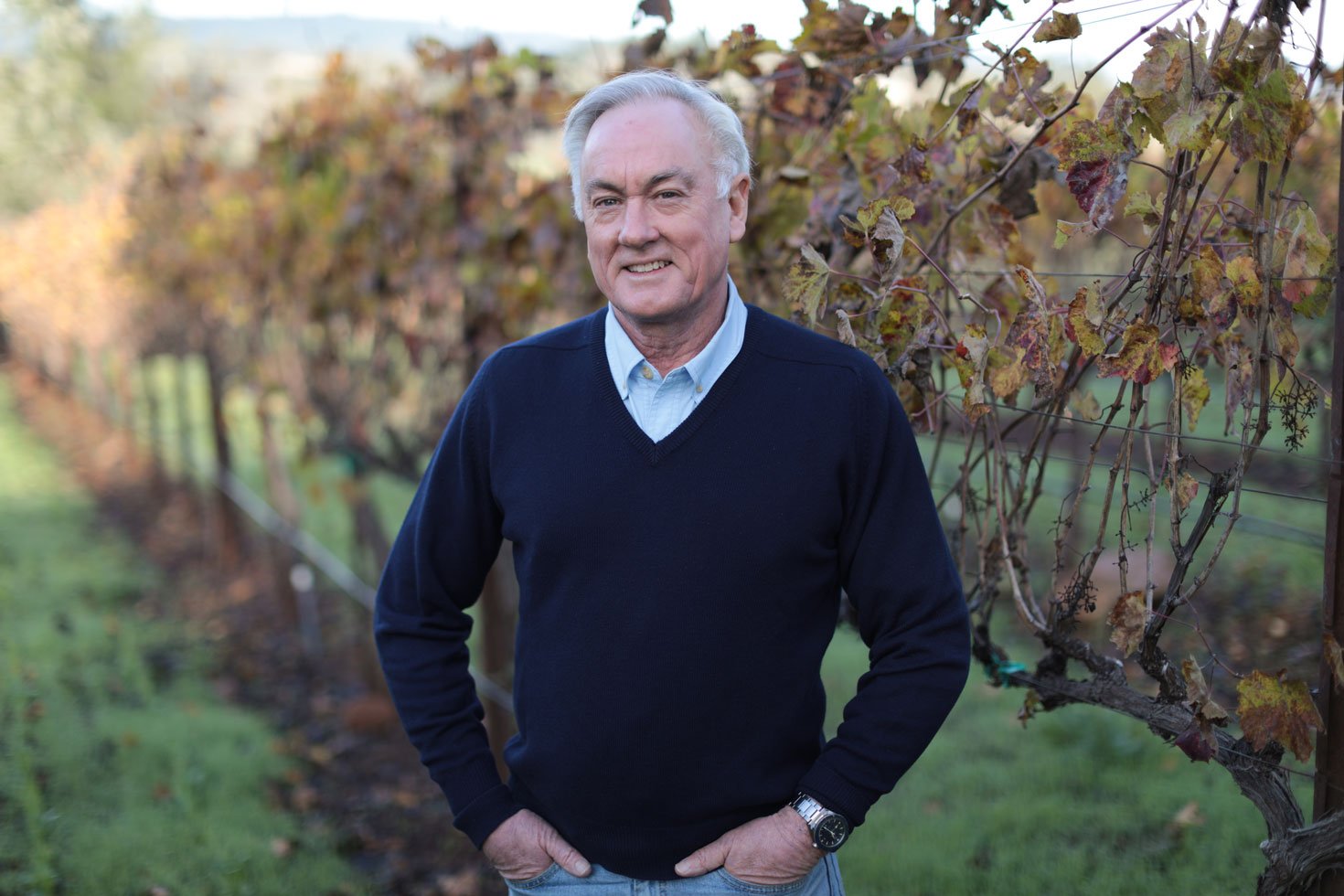
Some growers are now asking Jordan for replanting advice, Davis says. “Sharing knowledge back and forth between our estate and our growers, I love that we have a two-way street with farming, not just winemaking.” Fifth-generation grape grower Bret Munselle of Munselle Vineyards, another top grape grower for Jordan, even stopped by to assess the J4 experiment.
“It’s going to be fun to see how the replanting goes,” Davis says. “In a few years, we may very well ask ourselves, ‘Why didn’t we do this a long time ago?’ ”
Follow us @jordanwinery on Instagram, Facebook or Twitter for ongoing vineyard replanting updates.
